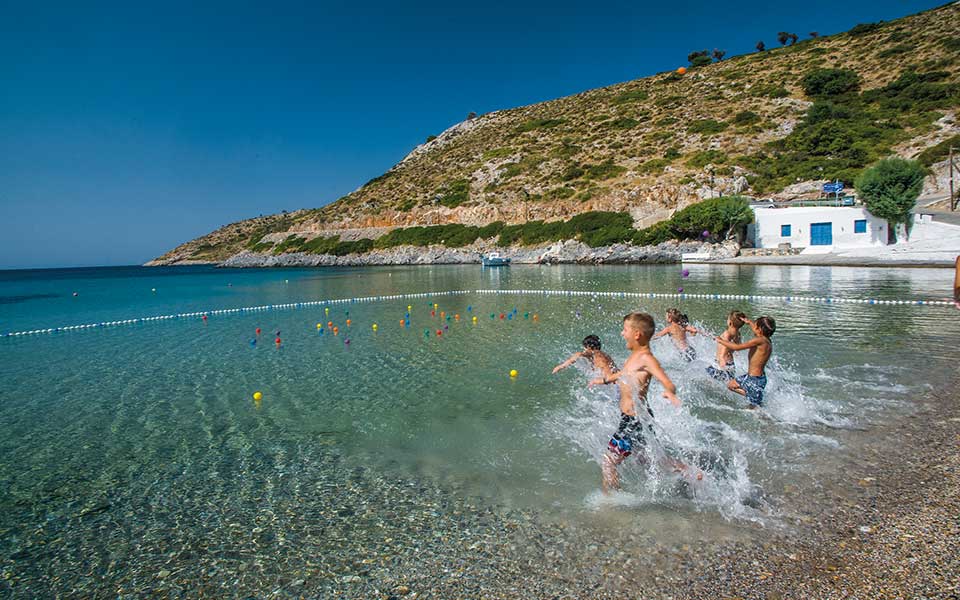It’s August of some year. I’m barefoot, with sand stuck to my feet, still in my bathing suit from swimming in the sea, my hair matted from the salt. In the burning heat of noon, the cicadas are going strong and the meltemi wind is bending the helichrysums. The sun hits them at an angle, making them shine.
The place is quiet, and you can just about hear an old piece of island music playing on a forgotten transistor radio. At Mitsos’ small taverna, located in Kalotaritissa on Donoussa – just as at Margarita’s on Anafi, at Trypas’ on Arki and Almyra on Sikinos – the beer is so cold that it’s covered in condensation before you even have time to pick it up. I would pick this setting and this feeling any day over visiting any bustling, cosmopolitan island.
They say there is not much to see or do in these places. Some people can hardly handle so much quiet. I remember a friend of mine who fled from the island of Anafi by helicopter; I will never understand her. Of course, Anafi has changed since then, as there are a lot of people that visit the island now. Some go free camping at Roukounas, others explore the incredible Hora and the many sandy beaches that are easy to reach.
I, on the other hand, go to Anafi for its paths on barren slopes and for Armenaki, to drink rakomelo (raki laced with honey) while Markos plays his bouzouki. I go to Anafi for the sunrise at Panaghia Kalamiotissa, where, after a night like no other, spent in a sleeping bag on the Mediterranean’s second largest rock – after Gibraltar – you wake up to see only the Aegean Sea and the most beautiful sunrise of your life.
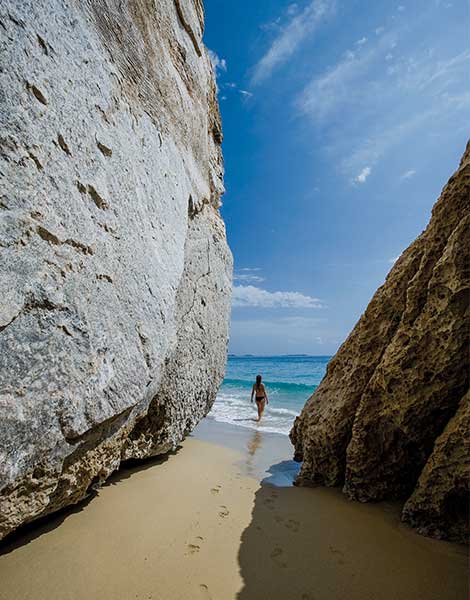
© Clairy Moustafellou
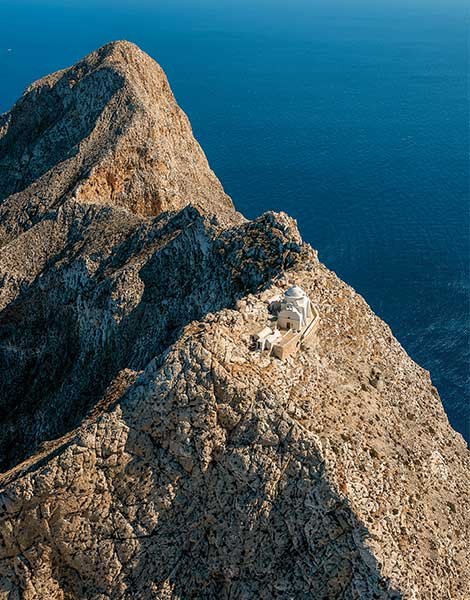
© Giannis Giannelos
Donoussa has a similar view at dawn from the summit of Mt Papas. Sometimes I walk in the Xylompatis area and feel as if the wind is piercing through me, or sunbathe in Aspros Kavos so that nobody can find me, or even look for the path that leads to VathyLimenari and the geometric settlement located among dry stones, thyme bushes and motionless lizards.
After a few days of solitude, I can rejoin the summer community. I can taste creative seafood recipes paired with fine Greek wines at Avli, wearing something other than my bathing suit. I can stay with everyone until dawn on Stavros Beach, dancing barefoot in the sand in front of the bar Corona Borealis, cocktail in hand, to incredible music. I can party at the Kedros beach bar and hang like a monkey in the tamarisk trees as a DJ takes over the decks.
Koufonisi was similar, some time ago, back when it was still unknown and carefree. A time when we would pass a slice of watermelon around and free camping was still allowed. A time when dawn found us at the legendary Sorokos bar, placing slightly inebriated bets on the shape of neighboring Keros island.
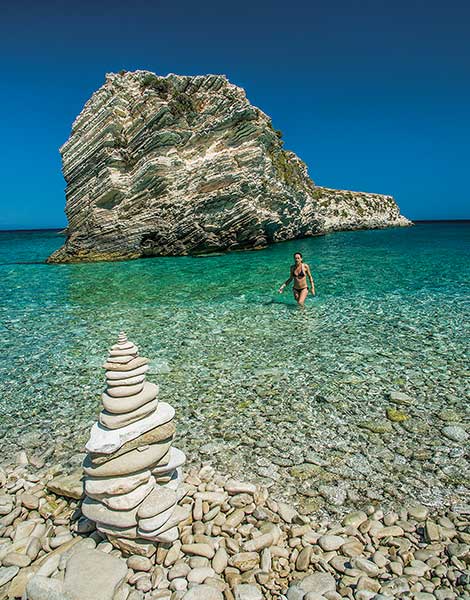
© Clairy Moustafellou
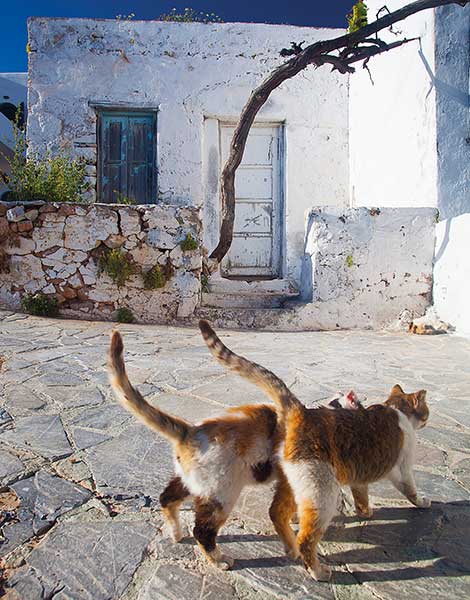
© Olga Charami
In small islands, groups of friends form and dissolve with ease. And if you want to, you can be left completely alone, as there are plenty of deserted beaches available. That’s the charm of non-touristy islands, although today there are none left. Even the islands of Pserimos and Telendos were filled with people in August last year.
I remember a morning on Telendos, with its 30 inhabitants and 50 rooms; the beaches were empty, everything was silent and suddenly, tourist boats arrived from Kalymnos. In just a few hours, about 200 people landed on the island, disturbing the afternoon calm. Luckily for us, they took off later, as we sat at Michalis the Greek’s taverna, drinking and eating like kings. This year, I imagine the influx of crowds will be significantly lessened.
In the Aspronisia – a group of uninhabited islets near Leipsi – one July went by without a soul stepping foot on them; just three sailboats dropped anchor in their bays, and seemed unwilling to leave. The Aspronisia are one of those places that you dream about in the winter to keep you going through the year: To be alone with the seagulls, cast away on a deserted isle like Armathia off Kasos, or Polyaigos off Kimolos.
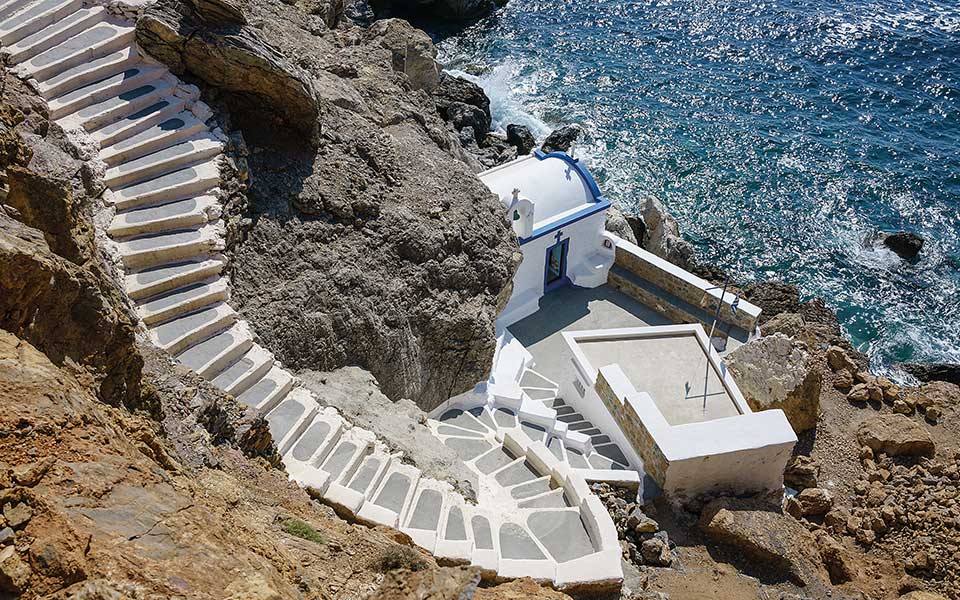
© Getty Images/Ideal Image
In these places, there is truly nothing to do. On the bigger, inhabited islands, there are, say, organized hiking networks. Elsewhere, you will find monuments and certainly meet people who are active in various ways.
How can anyone forget the sight of Episkopi Church, on the island of Sikinos, which you come to as you walk along a path in the wilderness? It is one of the most charming monuments that can be found on an island, consisting of a mix between an ancient temple, a Roman mausoleum and a Christian church.
Sikinos is also home to Giorgos Manalis’ winery, where he revives forgotten grape varieties with love and passion in a magnificent vineyard. You can taste the wines as you sit at a balcony and enjoy one of the most stunning views in all of the Aegean.
How can one forget the cave of Ai Yiannis with its stalactites on Irakleia – especially if you have experienced the feast that is held there at the end of August? Then there are the lending libraries of Kimolos, the mountain running races on Donousa, the sport climbing routes of Telendos…and much more.
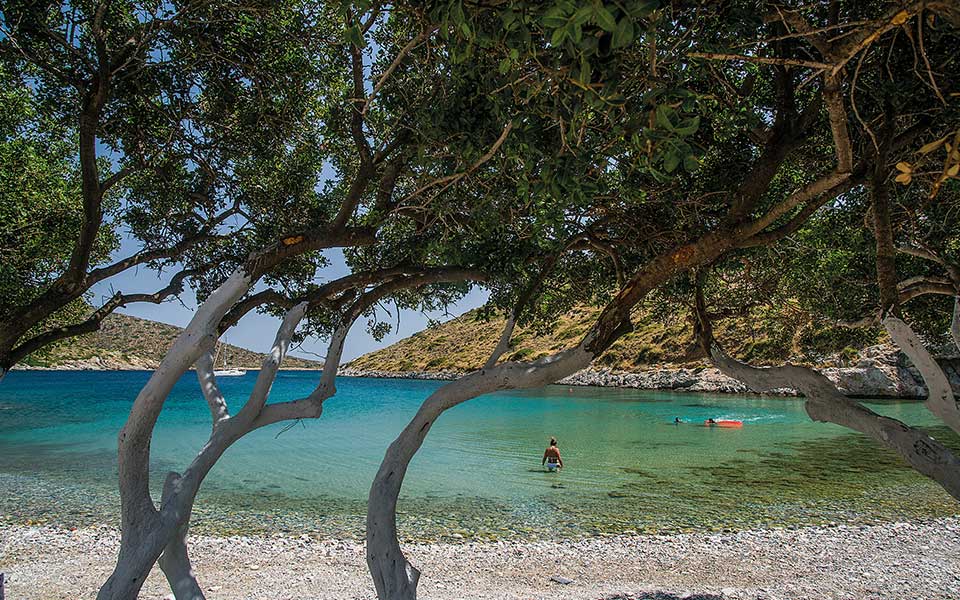
© Clairy Moustafellou
It all depends on one’s individual needs. For some, summer holidays are about not having any program whatsoever. They’re about traveling unavoidably on ferries for long and uncomfortable hours, sitting on plastic chairs, with feet up on the rail, getting sprayed by the waves. They’re about waiting for the ferry ramp to come down with another 20 people at most, and hearing the crew yell at you to disembark quickly, because they don’t want to waste any more time at the tiny island you’ve chosen.
They’re about staying in rooms or tents, and enjoying the most simple and delicious meals on the sand, where there are no reservations needed. They’re about not needing anything other than a bathing suit, two pieces of clothing and a pair of flip-flops – and many books. They’re about things being so simple that each sound you hear seems louder, like ice hitting the bottom of a glass or dice being thrown on the backgammon board.
They’re about walking around the village or the Hora, where there is one, crossing paths with cats lolling in the shade and ancient women who invite you into their courtyards for a Greek coffee and some prickly pear jam, and enjoying sight of bougainvillea on white backdrops. Finally, they are about smelling aromas of flowers, fish being fried and even melting wax – like in Sikinos, where women make beeswax candles for the festivals. These authentic experiences are much more common on islands like this.
For some, holidays have the love that goes into the kakavia fish soup that Akathi cooks on Irakleia, the unbelievable color of the waters around the island of Arki, and the sweet sound of Yiannis’ violin on Agathonisi. They do not include any worries or plans.
They are simple, just like Kimolos’ ladenia pie: 2-3 ingredients are enough to enchant you.

